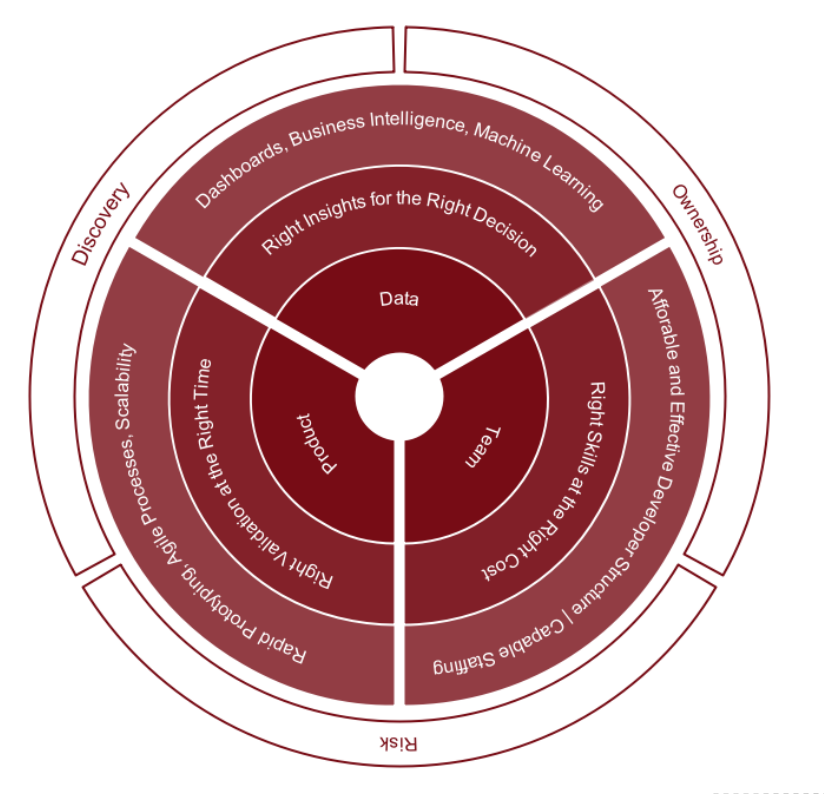Powers
I’ve discussed the three powers, which we made it part of our mission for our clients to achieve: Value Discovery, Risk Weighing, Ownership. Why did we choose these three?
We believe that technology is useless without people directing it. Digital technology can help discover great customer value, but your team still has to make the discoveries. Digital technology is not only powerful, but also expensive, so when using it, one needs to weigh the risks of wrong timing or wrong directions. And your management team needs to make the final decision where to go — decisions should be made by someone who experiences ownership. Our clients and Seita will discuss the options and do the risk weighing together, but the client is the owner, and they should feel that way.
Segments
Powers don’t come about by saying their names. We thought long and hard about what underlies these kinds of successes, based on our professional experiences. The three segments which we know are crucial for a successful data-driven organization are:
- Data
- Team
- Product
These segments and our three powers are not related one-by-one. Instead, each power is achieved when two underlying segments “click”. The graphic shows that nicely. Let’s go around:
Value discovery requires that the right data is known and that the product process is capable of bringing that data into features. Managing risk also requires a product process which is capable of finding out what does not work (and stop doing that), while building a team the right way plays a huge factor in whether this is possible and also is a huge cost center in itself. Having ownership of the process is certainly hard if there is no technical person on staff (if, say, all technical expertise is by consultants or out-sourced) — a healthy mix is probably reasonable. Finally, data also plays a huge part in having ownership. If all that data is governed by service providers (for example, all your dashboards are made and hosted by some third party), you might not feel empowered enough to succeed.
The trick is to find out exactly how all this applies for a specific case — your case. It pays off to think a little deeper into segments:


